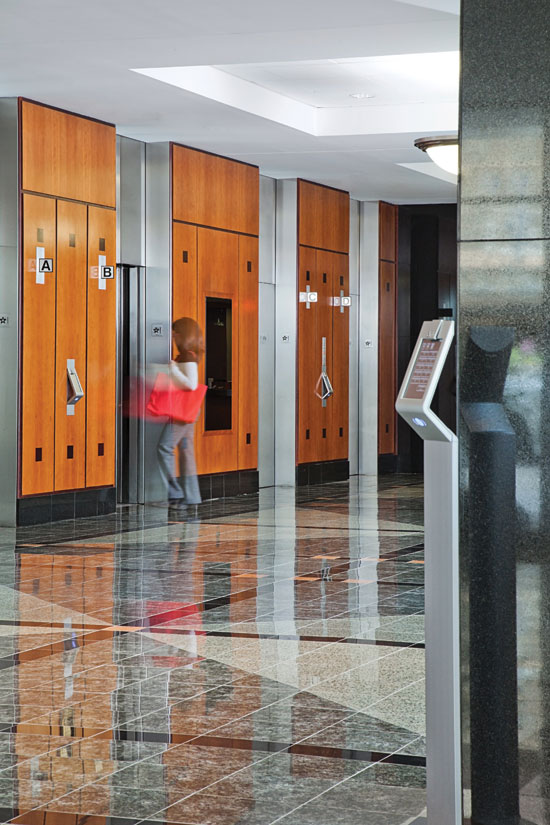Cutting-Edge Elevator Technology
Evolving Elevator Controls
Old-fashioned car-switch levers recall uniformed lift attendants and movies of a certain period. A few vestiges remain in big American cities, but not by design. Such controls are antiquated, but perhaps no more so than conventional up-and-down push-button controls will seem to be in the near future.
One of the first collective push-button control systems introduced into the marketplace dates back to 1909. The first automatic signal control in 1924 introduced electrical relay logic boards into the pantheon of lift control technology.
Microprocessor-based controls emerged in the late 1970s in Germany, Japan, and the United States, with systems that monitored every aspect of elevator operation. Most noteworthy was their ability—now standard—to gather and analyze data from sensors indicating car positions, moving directions, loads, and door status, as well as summaries of hall and car calls, runs per car, alarms, and more. Systems used a single, computer-based system and gave rise to remote elevator monitoring.
Next came destination-dispatch technology, introduced in 1992. “Back in those days it was relatively a hard sell,” says Bill Lippman, vice president, modernization sales and destination technology, for Schindler Elevator Corporation. “The first system was the only one on the market, and it was relegated to high-rise commercial office environments almost exclusively.” User controls for the product consisted of a numbered keypad, which the rider employed to input the destination floor. The LGCS, using a destination-dispatch algorithm, directed riders travelling to the same floor (or to floors near to one another) to enter a particular car.
 |
Computer-based elevator destination control systems allow users to indicate their destination before entering the car. Photo courtesy of Schindler Elevator Corporation |
Today there is a robust, competitive marketplace for elevator systems incorporating some form of destination-dispatch technology, with seven or more manufacturers and as many proprietary products. Applications are seen in universities, hotels, apartment buildings, and corporate headquarters, among others. The surge in research and development and market positioning largely reflects the measurable return on investment (ROI) associated with application of destination dispatch. Leading property managers and owners say it's likely to be the next paradigm in urban mobility solutions.
More recent developments in the control technology include second-generation destination dispatch control algorithms, introduced around 2004, that improve performance in all traffic modes, further reducing wait times and destination times. The addition of access-card readers to the user control panel further builds on the ideas of personalization and customized service. With a simple swipe, the controls recognize the user and floors available. The added level of security using access cards has also expanded interest among end-users. Visitors or contractors to a facility, for example, are issued cards in lobby or reception areas.









